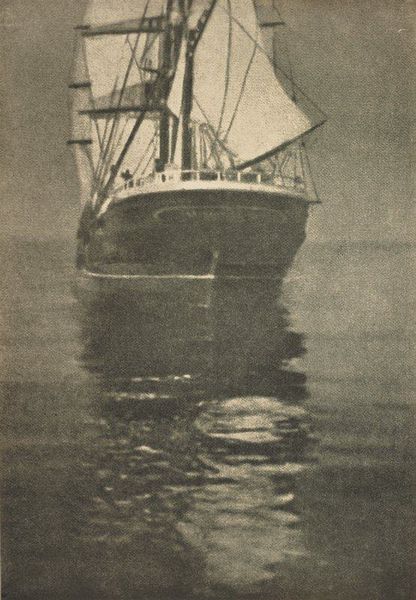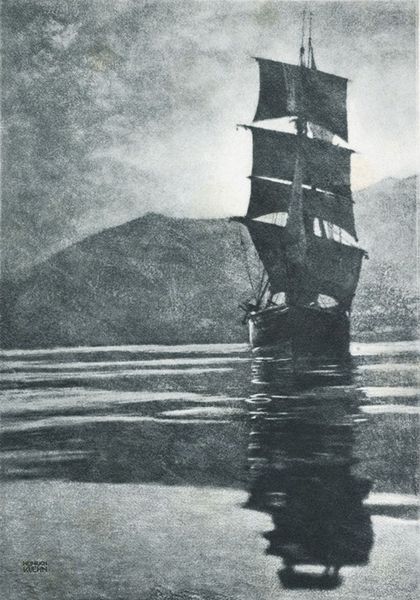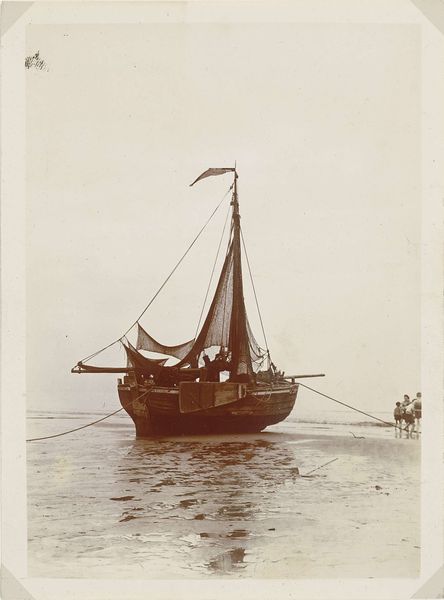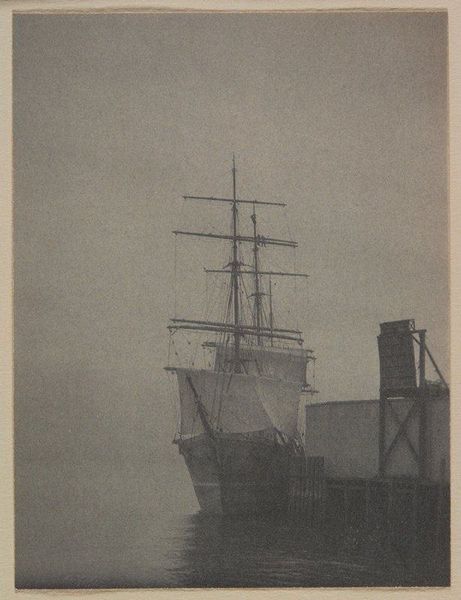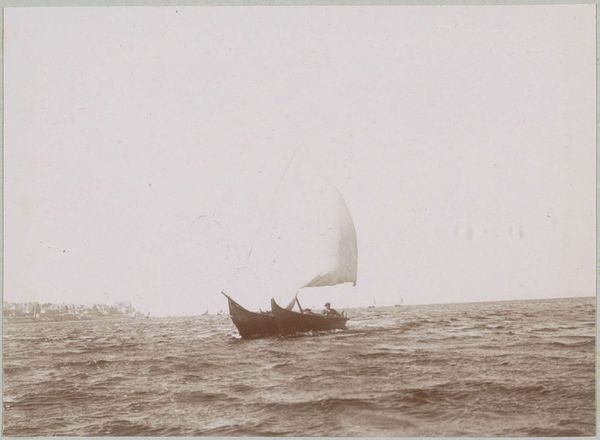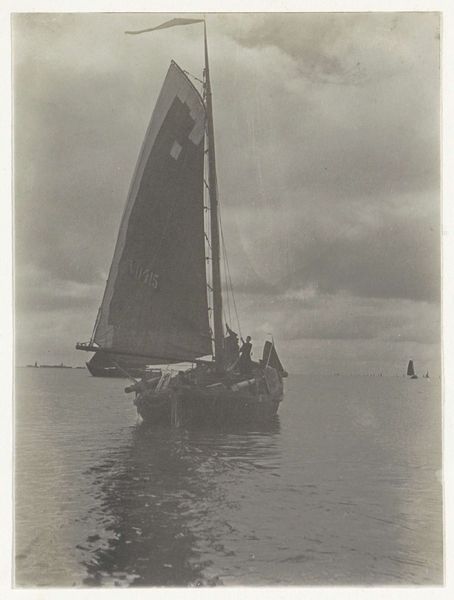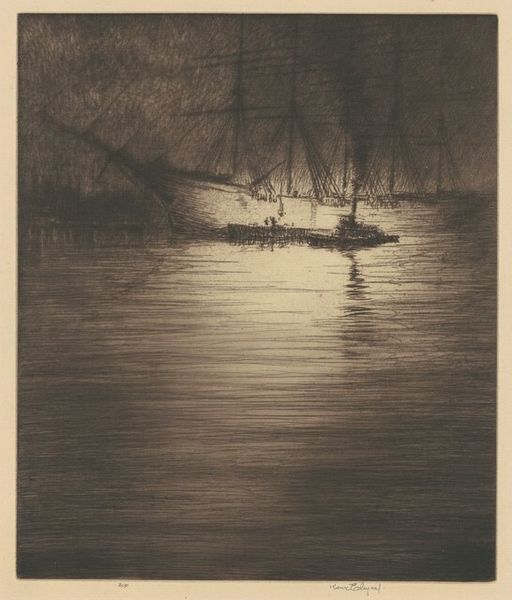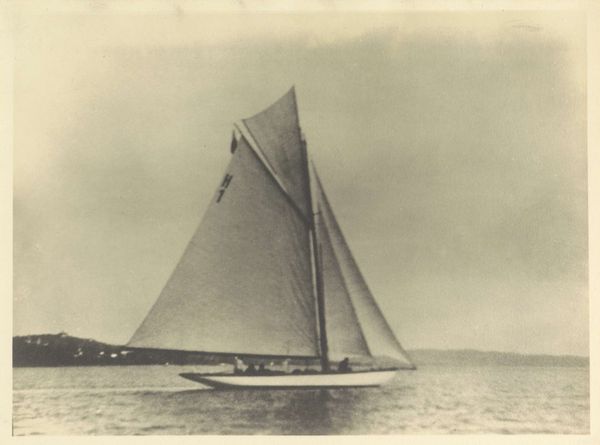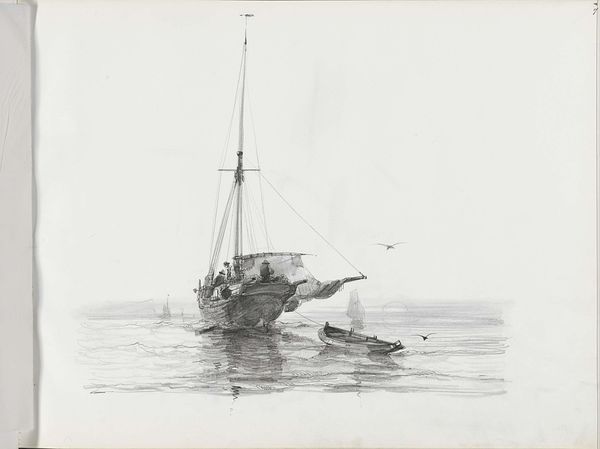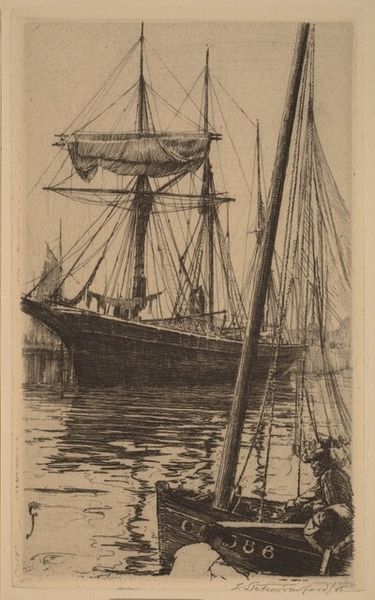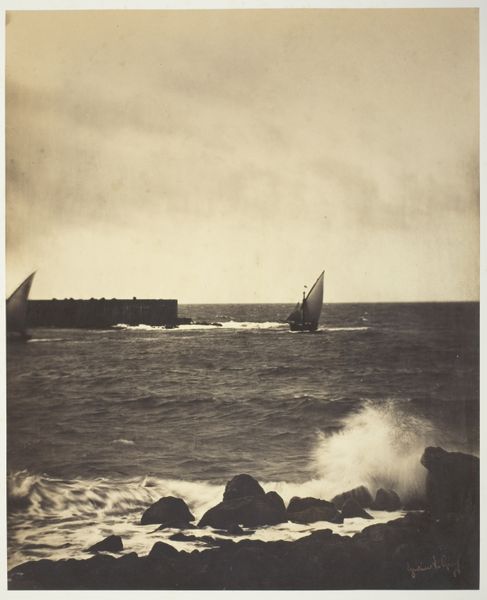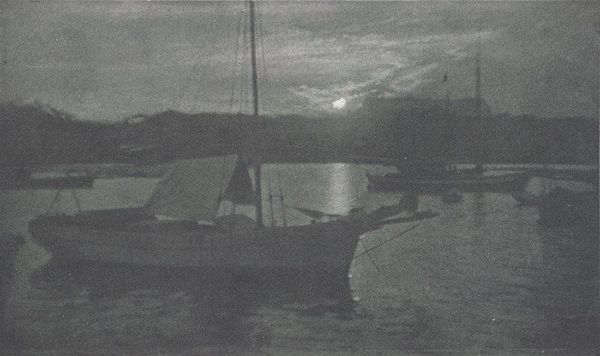
photography, gelatin-silver-print
#
landscape
#
photography
#
gelatin-silver-print
#
realism
Dimensions: 7 x 4 13/16 in. (17.78 x 12.22 cm) (image)
Copyright: No Copyright - United States
Curator: Theodor Hofmeister’s "Sea Calm," a gelatin-silver print dating from the late 19th to early 20th century, presents a captivating landscape study. Editor: My initial reaction is one of hushed reverence. The monochromatic palette and soft focus create an atmosphere of serene stillness, broken only by the majestic ship, which seems to glide effortlessly. Curator: This photograph emerged during a period of intense maritime activity, mirroring a society heavily reliant on naval transportation and trade. It offers insight into how individuals experienced the dominance and elegance of these vessels, connecting notions of power with romanticism of the sea. Consider how advancements in photography democratized image creation during this era, allowing diverse representations to surface. Editor: Absolutely. The ship itself, positioned centrally, feels symbolic. It evokes historical connotations – journeys, exploration, perhaps even the weight of colonialism and its lasting impact. The reflection in the water creates a doubling effect, emphasizing both the tangible and ethereal nature of maritime ventures and of course, trade. The stillness also presents an iconography of the "Romantic journey", of man at harmony with Nature. Curator: Right. Consider also how such realist portrayals intersected with a rapidly modernizing world. The "Sea Calm" exists as an imagined space outside of industrialized nations. There are layers upon layers of such representation built around colonialism and exclusion here, no? How does it frame access to spaces? Who profits and gains visibility, who becomes further abstracted? Editor: An excellent point. We shouldn't overlook that its visual calm contrasts against the tumultuous socio-political currents of its time, subtly pointing to power structures at play beneath the smooth surface. And Hofmeister might very well have intended this calm to evoke not a reality, but instead a mythopoetic experience. It's meant to signify what once was but could never be again. Curator: Considering its place within historical and social frameworks, and the enduring symbols employed, perhaps “Sea Calm” reveals a powerful visual paradox about history itself, doesn't it? Editor: Precisely. Through that tension, we perceive a powerful historical tension but, I think, also an emotional echo through these evocative maritime icons.
Comments
No comments
Be the first to comment and join the conversation on the ultimate creative platform.
